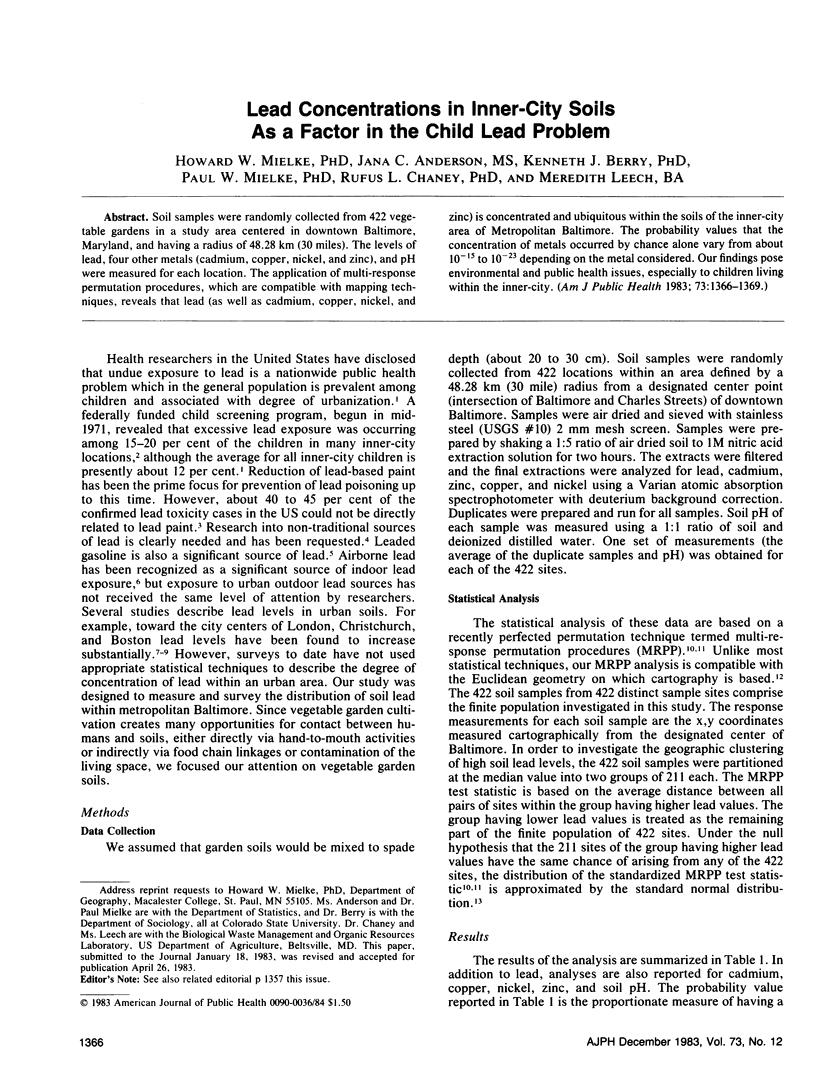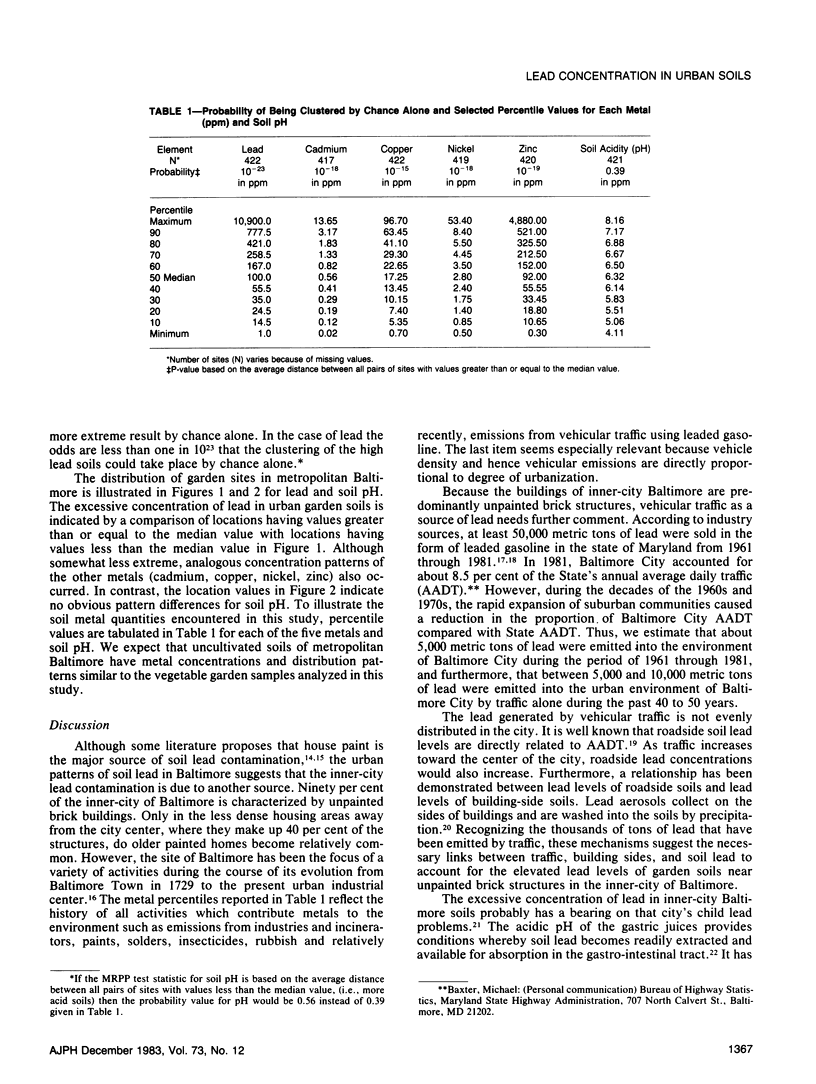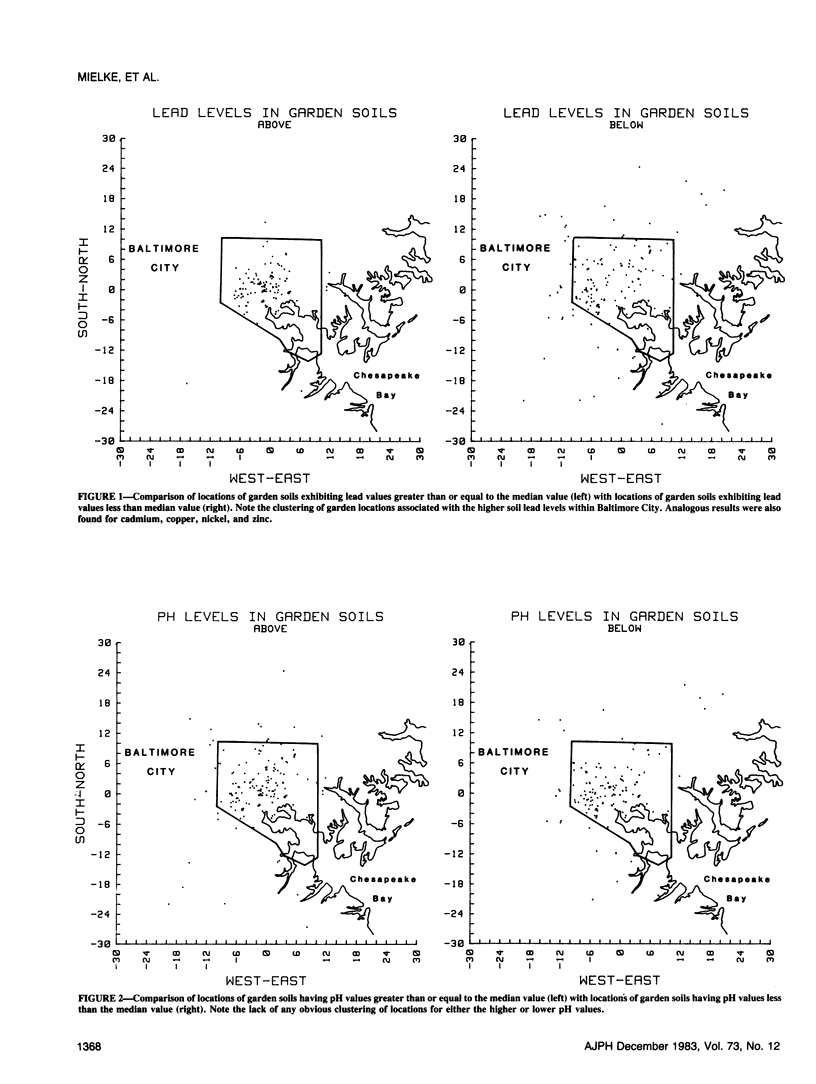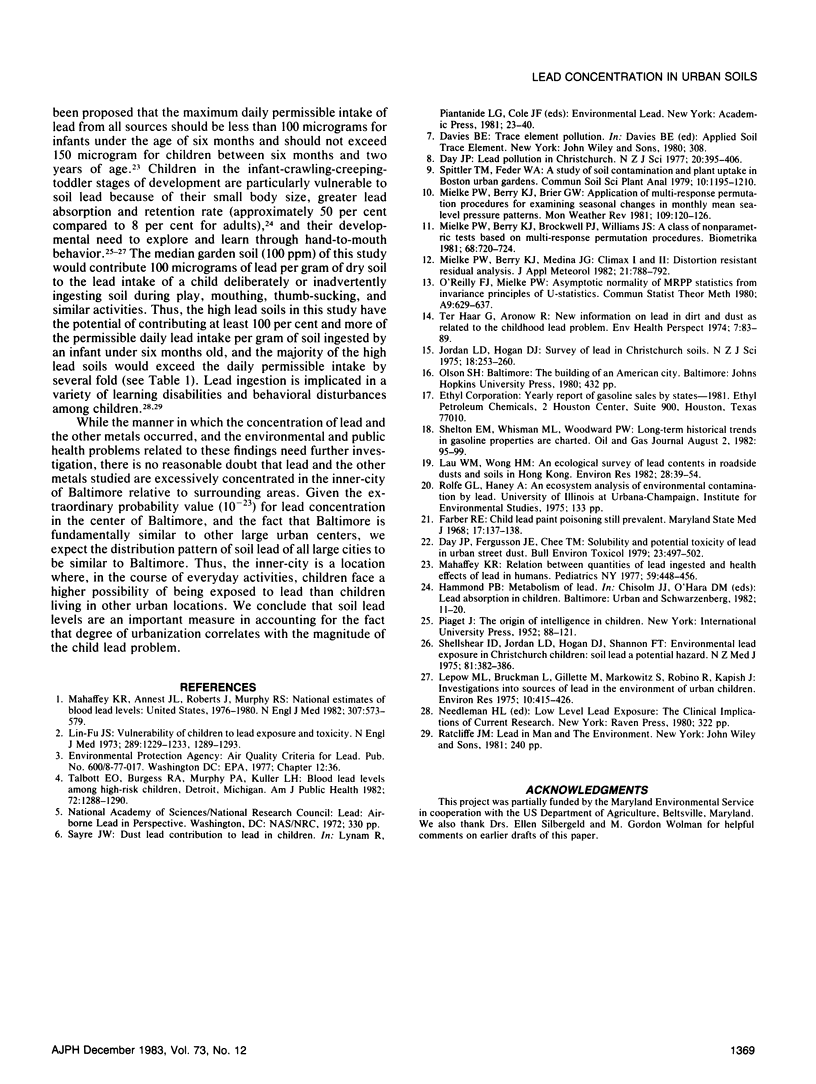Abstract
Soil samples were randomly collected from 422 vegetable gardens in a study area centered in downtown Baltimore, Maryland, and having a radius of 48.28 km (30 miles). The levels of lead, four other metals (cadmium, copper, nickel, and zinc), and pH were measured for each location. The application of multi-response permutation procedures, which are compatible with mapping techniques, reveals that lead (as well as cadmium, copper, nickel, and zinc) is concentrated and ubiquitous within the soils of the inner-city area of Metropolitan Baltimore. The probability values that the concentration of metals occurred by chance alone vary from about 10(-15) to 10(-23) depending on the metal considered. Our findings pose environmental and public health issues, especially to children living within the inner-city.
Full text
PDF



Selected References
These references are in PubMed. This may not be the complete list of references from this article.
- Day J. P., Fergusson J. E., Chee T. M. Solubility and potential toxicity of lead in urban street dust. Bull Environ Contam Toxicol. 1979 Nov;23(4-5):497–502. doi: 10.1007/BF01769994. [DOI] [PubMed] [Google Scholar]
- Farber R. E. Child lead paint poisoning still prevalent. Md State Med J. 1968 Jun;17(6):137–138. [PubMed] [Google Scholar]
- Haar G. T., Aronow R. New information on lead in dirt and dust as related to the childhood lead problem. Environ Health Perspect. 1974 May;7:83–89. doi: 10.1289/ehp.74783. [DOI] [PMC free article] [PubMed] [Google Scholar]
- Lau W. M., Wong H. M. An ecological survey of lead contents in roadside dusts and soils in Hong Kong. Environ Res. 1982 Jun;28(1):39–54. doi: 10.1016/0013-9351(82)90152-9. [DOI] [PubMed] [Google Scholar]
- Lepow M. L., Bruckman L., Gillette M., Markowitz S., Robino R., Kapish J. Investigations into sources of lead in the environment of urban children. Environ Res. 1975 Dec;10(3):415–426. doi: 10.1016/0013-9351(75)90037-7. [DOI] [PubMed] [Google Scholar]
- Lin-Fu J. S. Vulnerability of children to lead exposure and toxicity (second of two parts). N Engl J Med. 1973 Dec 13;289(24):1289–1293. doi: 10.1056/NEJM197312132892407. [DOI] [PubMed] [Google Scholar]
- Mahaffey K. R., Annest J. L., Roberts J., Murphy R. S. National estimates of blood lead levels: United States, 1976-1980: association with selected demographic and socioeconomic factors. N Engl J Med. 1982 Sep 2;307(10):573–579. doi: 10.1056/NEJM198209023071001. [DOI] [PubMed] [Google Scholar]
- Mahaffey K. R. Relation between quantities of lead ingested and health effects of lead in humans. Pediatrics. 1977 Mar;59(3):448–455. [PubMed] [Google Scholar]
- Shellshear I. D., Jordan L. D., Hogan D. J., Shannon F. T. Environmental lead exposure in Christchurch children: soil lead a potential hazard. N Z Med J. 1975 Apr 23;81(538):382–386. [PubMed] [Google Scholar]
- Talbott E. O., Burgess R. A., Murphy P. A., Kuller L. H. Blood lead levels among high-risk children, Detroit, Michigan. Am J Public Health. 1982 Nov;72(11):1288–1290. doi: 10.2105/ajph.72.11.1288. [DOI] [PMC free article] [PubMed] [Google Scholar]
- Watson R. D., Stallard T. J., Littler W. A. Influence of once-daily administration of beta-adrenoceptor antagonists on arterial pressure and its variability. Lancet. 1979 Jun 9;1(8128):1210–1213. doi: 10.1016/s0140-6736(79)91896-8. [DOI] [PubMed] [Google Scholar]


